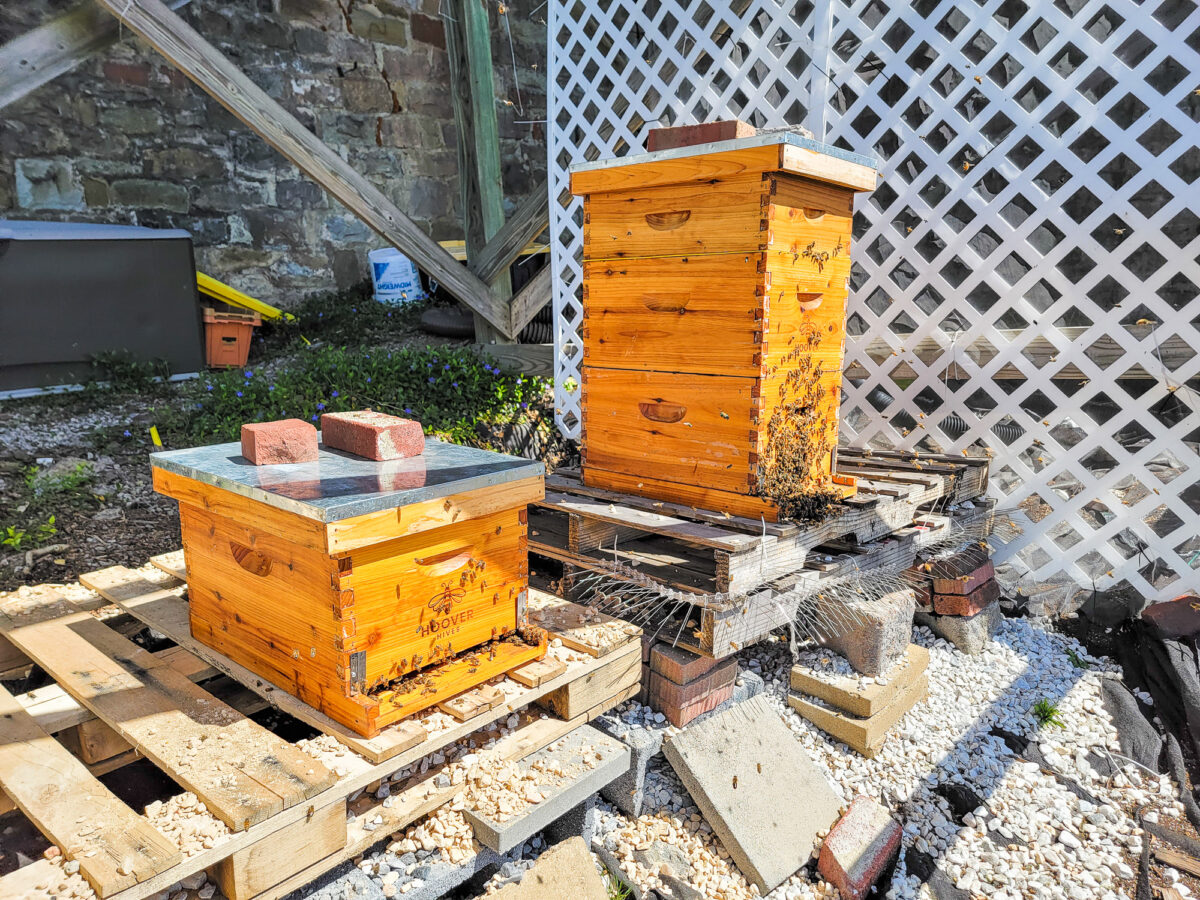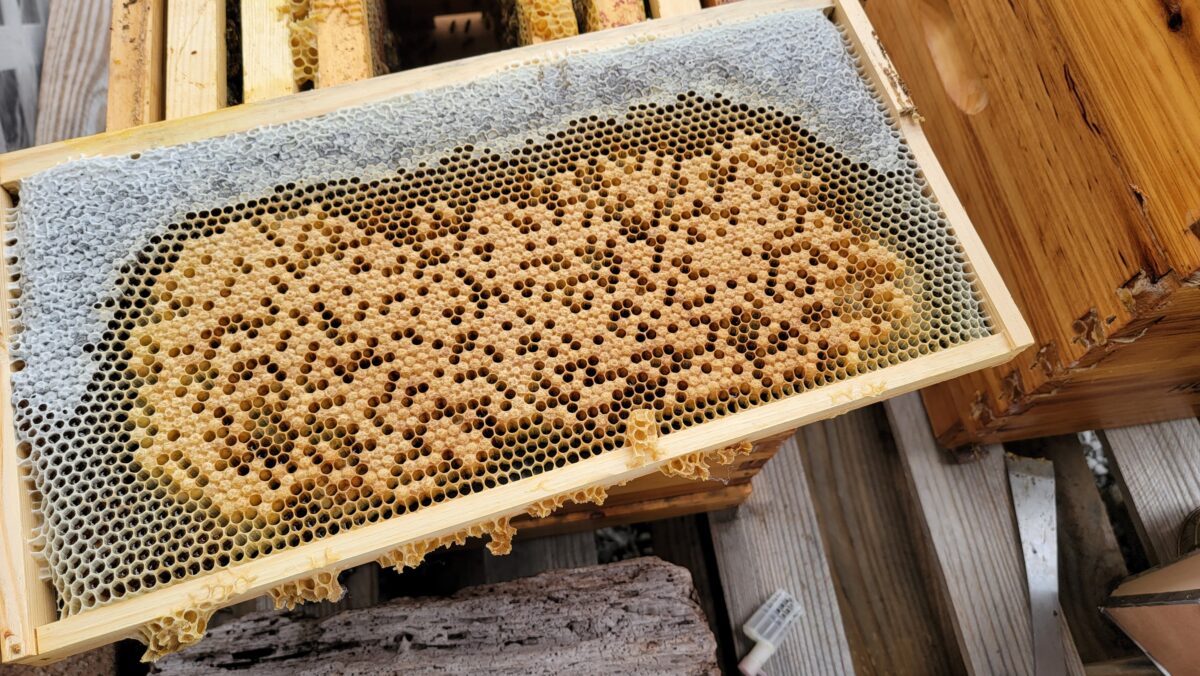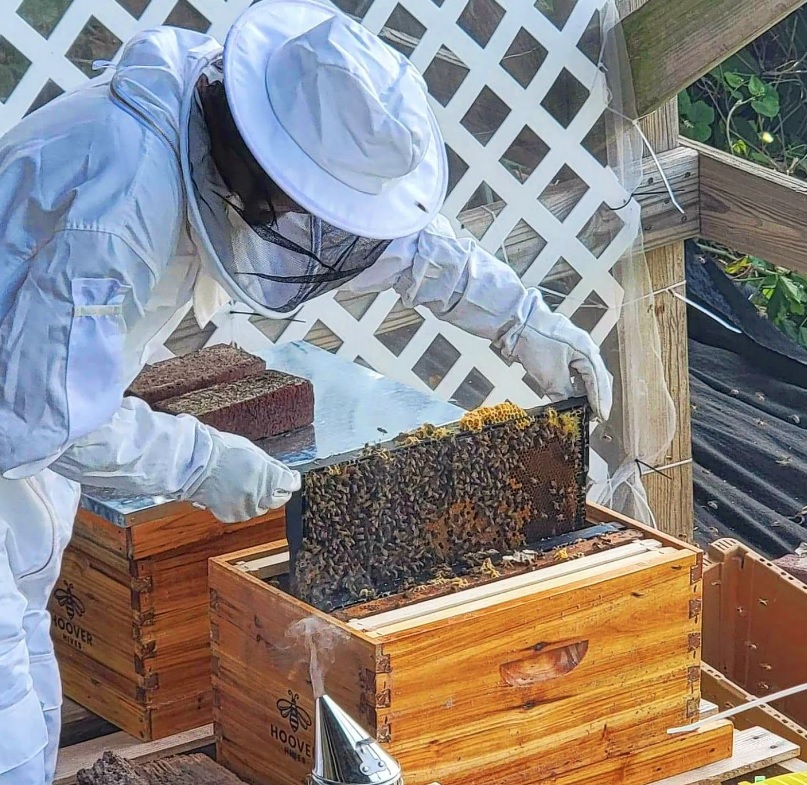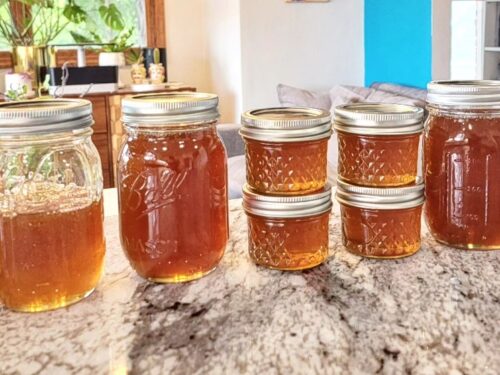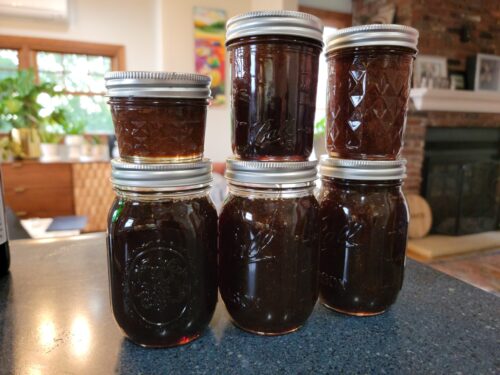Disclaimers: Our site uses demographic data, email opt-ins, display advertising, and affiliate links. Please check out our Terms and Conditions for more information.
We have loved getting into beekeeping as a hobby for the reward of getting a honey harvest in the season and maintaining a colony of pollinators in our local ecosystem.
One tip you'll see come up time and time again is that those looking into keeping bee hives should start with at least two hives. As this is a crucial tip that can determine whether your hive(s) succeed or fail, we wanted to go more into why it is necessary in this one.
Multiple Bee Hives Offer a Hedge
While you may think that each bee hive acts as its own, independent colony, there are many instances where a thriving hive may be able to share resources when another is struggling.
The biggest, and most likely one for most beekeepers, involves the death of a queen. When a queen dies (or is moved during a split), a beehive goes into emergency management mode to rear a new one- namely feeding a larva more royal jelly, building out a queen cell, and letting it morph into a queen from a traditional worker.
Most of the time, the colony will come out the other side with a new queen. But in some cases, they fail at rearing a new queen, the last egg population grows, gets capped, and a hive runs out of opportunities to create a new one- putting it on the path to an inevitable collapse. In this instance, having a second, healthy hive allows you to take a frame of eggs, larva, and capped brood (without any bees!), move it into the struggling hive, and it gives the colony one more chance to rear a new queen from the newly inserted eggs.
This happened in our first year beekeeping with two hives, and having a second allowed me to power through and, eventually, recover. In our second year beekeeping with four hives, we had two hives lose their queen (one via a split and one via a poor performing nuc) and swapping resources helped them both recover through creating a queen naturally. Had we only had one hive and this happened, we may have been out of luck and lost it all!
Comparing Hive Health and Progress
Another issue with only having a single bee hive is simply that you have no other reference point for how the hive is doing. You go in, do an inspection, and walk away with just a single data point.
Is the queen producing a sufficient amount of brood? Are the workers collecting enough pollen and honey during a nectar flow? Will the hive be ready for winter? With only having a single data point to look at, it is really hard to say.
When you have two or more beehives, you are now able to compare. If one hive is going nuts, with full frames of eggs and brood, a ton of honey stores, and more, and the other is producing at a fraction of the point, you now have a comparative data point. The other hive may need to be investigated more to see how the queen is doing, whether or not there may be a disease present, and if they need to be fed a sugar substitute when not collecting honey in a super (these are just a few possible issues amongst many).
When only having one, you are really flying blind at times as referencing the health and progress of many hives is a great point of reference.
Swarm Management
Swarming is a natural process that all hives go through. Each spring as a colony comes out of overwintering, it is a natural tendency for a hive (the queen plus a sufficient number of workers) to leave and find a new, bigger home to reside in.
Although this is normal in the wild, for the home beekeeper who wants to produce honey for extraction, losing a good percentage of your colony to a swarm can be devastating. You may recover, but the hive could also collapse with this loss.
This is why beekeepers engage in what is known as a beehive split. This process (whose steps are outlined in greater detail at the previous link), create an artificial swarm by moving the queen and a sufficient number of bees into a new beehive within your apiary. The queen and bees feel like they've swarmed, the bees that remain in the original hive attempt to create a new queen, and, when done right allows us as beekeepers to grow our apiary- one hive now becomes two!
But, as with everything, splitting hives comes with risks, particularly many of the same issues outlined in previous sections where the queenless hive may not rear a new one, resources may dwindle if the new hive was not split properly, and more. As such, having more than one hive outside of a split allows for resource sharing, comparing progress, and more.
When we did our first split, I was 100% convinced that the old hive did not rear a new queen. Their resources began to dwindle, available eggs became larva and got capped, and no queen was to be found. Once again, by sharing resources from another, more successful hive, did they successfully rear a new queen and get back on track to collecting honey that I could eventually harvest.
Combining Weak Hives with Stronger Hives
In the previous section, we discussed how bees have a natural tendency to want to swarm, and how we can split a beehive to inhibit this while growing our apiary. The reverse is also true.
Let's say you have a hive that lost its queen, the hive tried to rear a new one and failed, and you are approaching the end of the season such that time is running out for the hive to collect enough resources to make it through winter even if a new queen was somehow introduced.
This hive is likely marching straight toward an inevitable collapse.
When you have multiple hives, you can do the reverse of a split and combine a weak, queenless hive into a new one using techniques like the newspaper method. All you really have to do here is put a thin layer of newspaper on top of a brood chamber of a healthy hive, move boxes containing the remaining bees from a weak (queenless) hive on top, and in the amount of time it takes the bees to chew through the newspaper (generally a few days), the new bees will recognize the queen-right colony's queen and integrate into the old hive.
While going from two hives to one is generally the opposite of what we strive for as beekeepers, doing this allows you to preserve resources. Had the failing hive completely collapsed, that may open up the hive to robbing from 3rd parties, and their precious pollen and nectar reserves may be stolen and taken to a colony outside of your apiary. When merging, you preserve the honey in the original hive, give them more resources to survive winter, and, if they do not consume all the honey throughout overwintering, can start a new split off with a greater concentration of resources in the spring.
Averaging Down Costs and Time (Sort Of)
Finally, we come to the fact that beekeeping is an expensive and somewhat time consuming hobby. We did a full analysis on how long it takes a beehive to pay itself off on the financial side, and noted that it generally costs, at a minimum, $500 per hive to get started (often much higher), plus annual expenses for things like mite treatments, new bees (if a colony failed), sugar for feeding, and more.
By having multiple bee hives, you can average your costs down over time. If a hive fails and you can split another in the spring, you saved yourself $100-$200 not having to buy another nucleus colony. If you have multiple hives, you can get more value from equipment like smokers, extractors, vaporizers, and other expensive items that can service your hives.
I don't know about you, but spending ~$200 for a honey extractor for a single hive doesn't make sense from a financial perspective. But if you have two, four, or more, the cost-per-use average drops into a more reasonable territory over time. A $200 extractor used once per season over a decade comes to a $20/year average cost. But if you have, say, four hives, and harvest twice a year, that ten-year average drops to about $2.5/year average cost.
The same logic can also be applied to the time element as well. Yes, more beehives mean more time working in the apiary. But, proportionally speaking, I spend far more time preparing to get ready than I do actually inspecting, so the time element is lower, on a per hive basis at least, with four than it is two.
As you scale, the average costs, both in money and time, go down.
The downside in this particular example is that there is a notable difference between average and total cost (or time!). You will still likely pay $2,000+ for four hives when you may pay just $500+ for a single hive. You will still spend more net time inspecting four hives than one. The total net costs always goes up. But over time, having multiple beehives helps you save here or there such that your averages over the life of any given hive will drop. Is this enough to warrant buying more hives on its own to average down? I'd argue not really. But it is still a (tiny) perk you get when you expand all the same.
Ultimately, these are just a few of many reasons why beekeepers should always start with at least two beehives. From monitoring hive health, having comparative data points, averaging costs down, and being able to deal with hive collapse and growth, many issues can be addressed when keeping multiple beehives in a single apiary. From there, the sky (and local zoning laws, in our case) is truly the limit!
Do you have any other lessons learned for why two hives (or more) are better than one? Comment below to share!
Start an Apiary Today
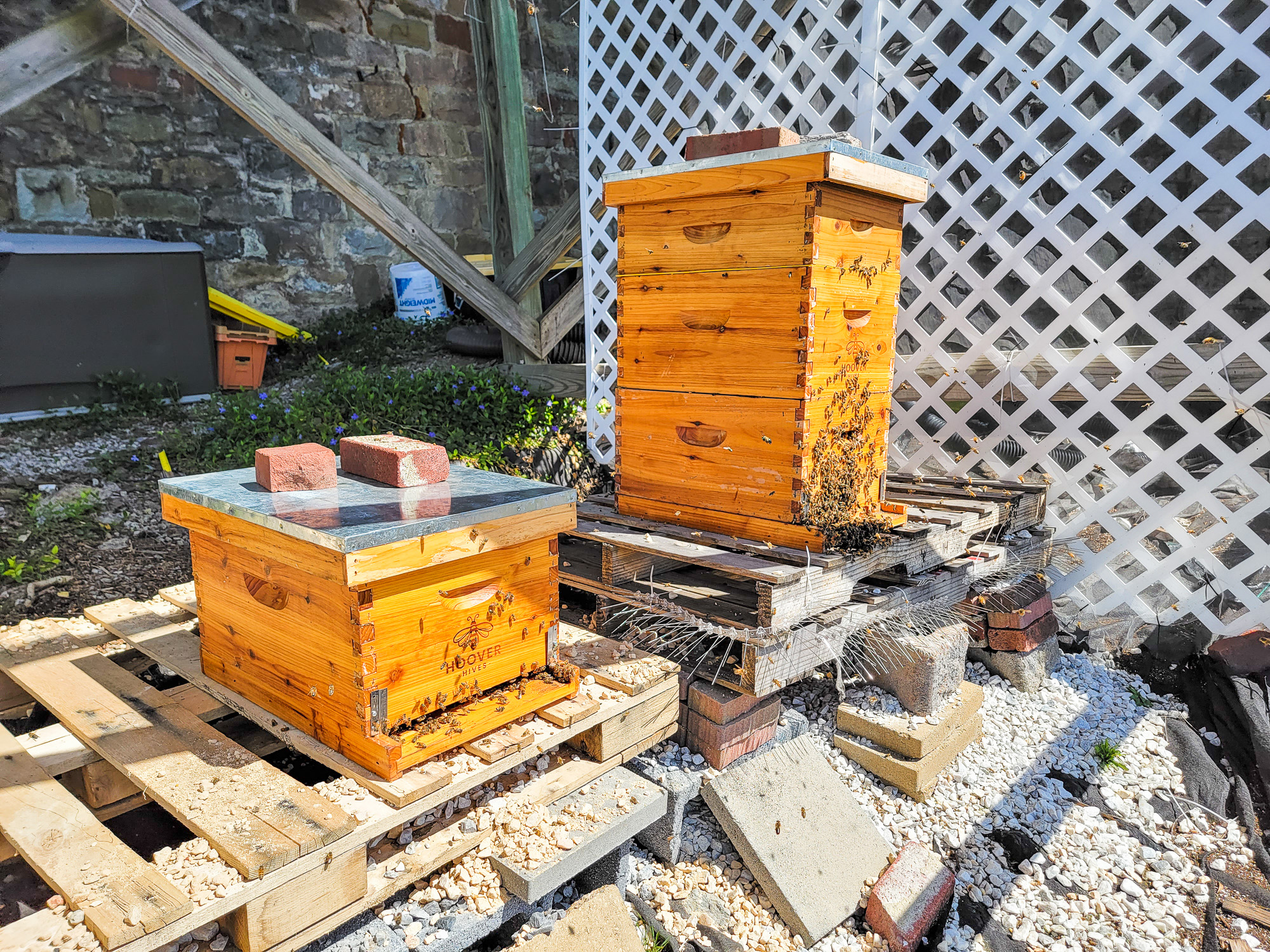
Looking to get into beekeeping? Pick-up preassembled waxed Hoover Hives from Galena Farms. Use discount code HIPSTERHOMESTEADERS to take 5% off your order!

